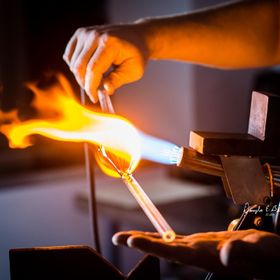
Views
678
Likes
Awards
Zenith Award
Spring Selection Award
Absolute Masterpiece
Top Choice
Superb Composition
Outstanding Creativity
Peer Award
All Star
Love it
Top Ranks
Same photographer See allBehind The Lens
Behind The Lens
Location
Shooting car shows is very challenging. Cars are generally parked as in a parking lot, meaning close spacing. The finishes on most show cars are akin to mirrors, reflecting everything - the sky, adjacent cars, buildings, other people. You really have to pay attention to mise-en-scene. This '57 BelAir was parked at a show in a small town in central Illinois. As luck would have it, it was a convertible and the owner had the top down. This opened the car for some great interior shots, images from a different perspective, and without contending with a mirrored paint job.Time
Although this was shot in the early evening. In this area, Friday evening "cruise ins" are common among the regional car clubs.Lighting
This car was parked East/West on a North/South running street in downtown business district of a small Midwestern town. Because of the lateness of the day and the adjacent commercial buildings lining the street, the light was mostly flat. As with most of my images, I use available light as a rule. Using available light allows me to capture the image as the eye sees it, which is what attracts me to a scene in the first place.Equipment
Everybody always asks what equipment do you use. Well, it doesn't really matter what equipment you use. Ninety percent of a quality image comes from YOU, not the camera. The key to a great image is having a vision of that final, printed image, in your mind, before you capture it. This is called “previsualization”. It has nothing to do with the equipment used. It has everything to do with you, the photographer. Previsualization is how you move from taking snap shots to taking photographs. Previsualization is a technique that most anyone can develop, but it takes time and practice. Lots of practice. And lots of throw away images. It takes self reflection when you get a good capture: what did I do, how was the camera set, can I do it again. Do you need an artistic vision? I am a technologist by training and have spent my life designing and building state-of-the-art telecommunication systems, and in IT. I have no art training of any kind. My photography training was in photojournalism, not visual arts. I have been practicing previsualization for over 30 years. Great images are captured on cellphones, $3000 DSLRs, 50 year old medium format film cameras, and even self-made box cameras. Its not about hardware. Its about YOUR vision and being able to use the equipment you have available in the best way you can to capture YOUR image. If you still want to know about hardware, the body was a Nikon D600 (full frame, 24Mp). The lens was a Nikon 18mm-200mm AF. Settings were 1/30s at f/7.1. I use the slowest ISO I can get away with. For this image, the camera was set to ISO200.Inspiration
Inspiration was simple. I always wondered what it would be like to sit behind the wheel of a classic car, like this '57 Chevy. So, I had a vision in my mind for some time about capturing a steering wheel and dashboard and printing long, emulating sitting in the front seat. I tried several times to get the shot from various positions in a car - drivers seat, over the back of the drivers seat, over the back of the center of the front seat, through rear windows. They never worked for me. On this day, this car was a convertible, and the top was down. This allowed me to shoot from behind the car, and over the back of the seat, without the limitation of a rear window. Being further back allowed me to use a "normal" focal length, rather than a wide angle focal length, which allowed me to eliminate wide angle lens distortion.Editing
I use Lightroom. I am not a digital artist. I do not create images on the computer. I allow Lightroom to give me the tools I used to use in a chemical darkroom, which in turn allows me to use traditional darkroom techniques (or reasonable facsimile). This image was cropped, had exposure control, burning/dodging, color correction (reference traditional color analyzers), contrast, and sharpening (reference critical focusing). With a slight wink to the modern era, the saturation was bumped up a bit, although, traditionally, this would have been done with proper film selection.In my camera bag
In my bag, I have a Nikon D200 (back up and wife-use camera), manual focus Nikon 28mm f/2.8 AIs, manual focus Nikon 55mm micro f/2.8 AIs, Nikon 18mm-200mm AF DX (D200), and the Nikon 80mm-200mm f/2.8 D AF. Why do I keep using manual focus lenses? Because the 55mm micro is the sharpest lens on the planet. It is also light weight, fast, cheap, and still available new. The 28mm is also one of the sharpest lenses ever. Lenses are the most important part of your equipment. You don't have to spend kilo-bucks to get outstanding quality and performance.Feedback
1) Don't touch the car! 2) Ask the owner's permission before getting inside. 3) Ask the owner to raise/lower the hood/roof if that's what you need to complete the vision of the image you have. Usually they are very accommodating. 4) Leave any equipment you are carrying, your coat, keys, etc. with a friend/go-fer or with the owner. You do not want to bang or scratch the car with something you are carrying and not using. Space is tight when working around cars at a car show. 5) Shooting an interior from behind a car requires an elevated shooting position. If you are vertically challenged, consider a 2-step lightweight step ladder, a strong tool box or other box to help you get a little more height and a steeper, downward angle.


























